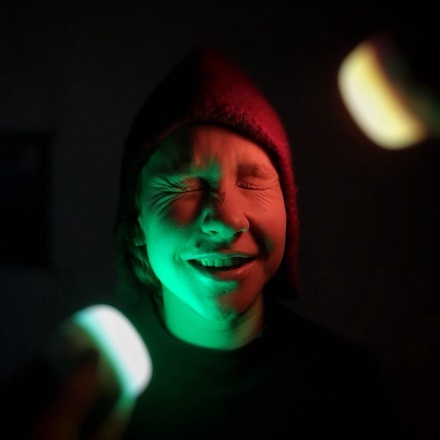Credits
| Director | Sasha Kulak |
| Director | Ben Guez |
| Producer | Ben Guez |
| Producer | Misha MacLaird |
| Cinematographer / DP | Sasha Kulak |
| Editor | Sasha Kulak |
| Editor | Ben Guez |

Sasha Kulak
Director01/29/1990
Biography
Sasha Kulak is from Vitebsk, Belarus. Curator and media artist whose works includes documentaries / video / fashion / music / photography. In 2015, graduated from Saint-Petersburg University Culture and Arts, then from the department of cinematography at the Moscow School of New Cinema.
Filmography
Her work as director and cinematographer includes: - the short film “Christmas” (co-directed with Ruslan Fedotow, 2014) - documentary musical “OK Good”, 2015 - the award-winning medium-length documentary “Salamanca” (co-dir. Ruslan Fedotow, 2015) - Anatoly Vasiliev's "Asino", premiered in Rotterdam, 2018 - a part of almanac ”No ribbons, trophies, medals" (co-dir. Rostislav Smirnyagin, 2018)

Ben Guez
Director03/08/1983
Biography
Ben Guez was born in 1983 in the Soviet Union and at the age of nine immigrated to Chicago. After graduating with a degree in history and Latin American studies from the University of Arizona in 2006, he resumed his documentation and research of large metropolises (Bogota, Buenos Aires, Havana, Mexico City) and isolated communities in the Americas (Sierra Madre in Mexico, Colombian/Ecuadorian Pacific, and maroon settlements of the Caribbean among others).
Filmography
His last two short films “The Memory of Turtles” and “Valentina” participated in numerous festivals worldwide including SFFILM and GIFF. He worked as associate producer, 2nd camera, and sound mixer for the feature documentary “Antigone” (Pedro González-Rubio, 2018). He is currently developing “Quicksilver Chronicles” as a 2018 San Francisco Film Society FilmHouse resident.
Directors Statement
A question central to the narrative and the project as a whole surfaced: what does it mean to photograph the living and hold that evidence of their existence (so soon) after their death? What does one capture when photographing the remains of a once-inhabited town, to photograph the absence of life, of movement, and of structure?